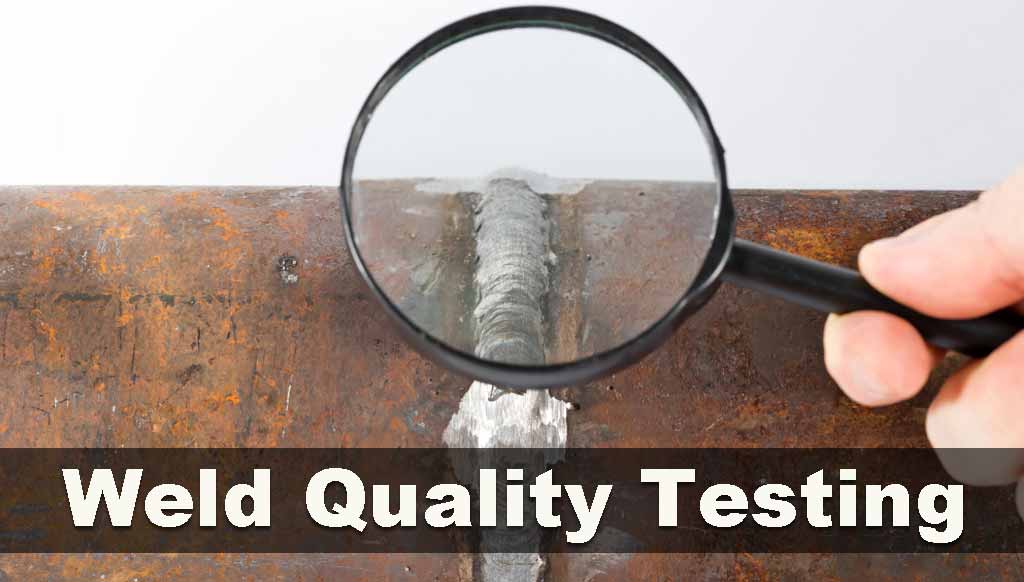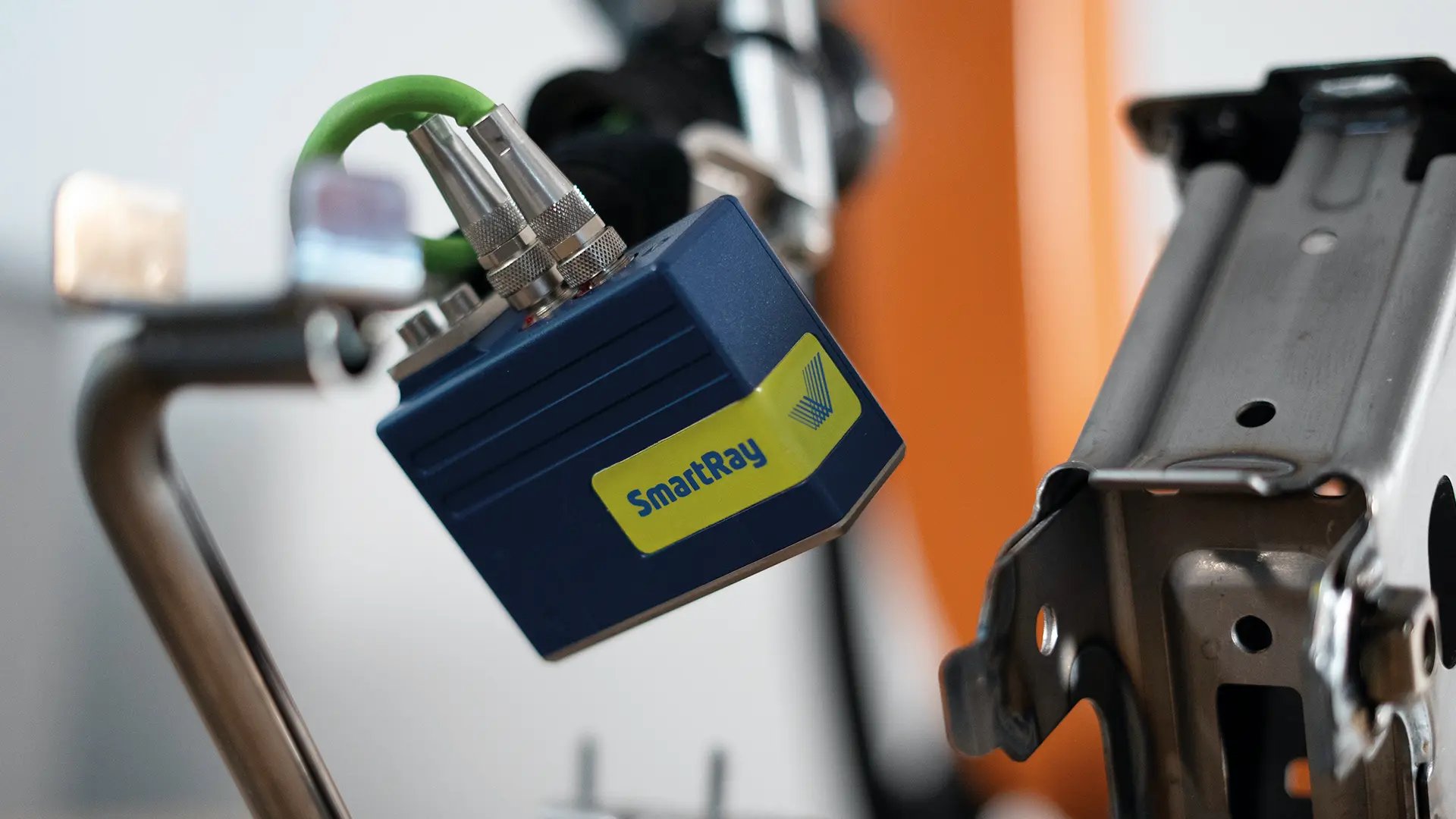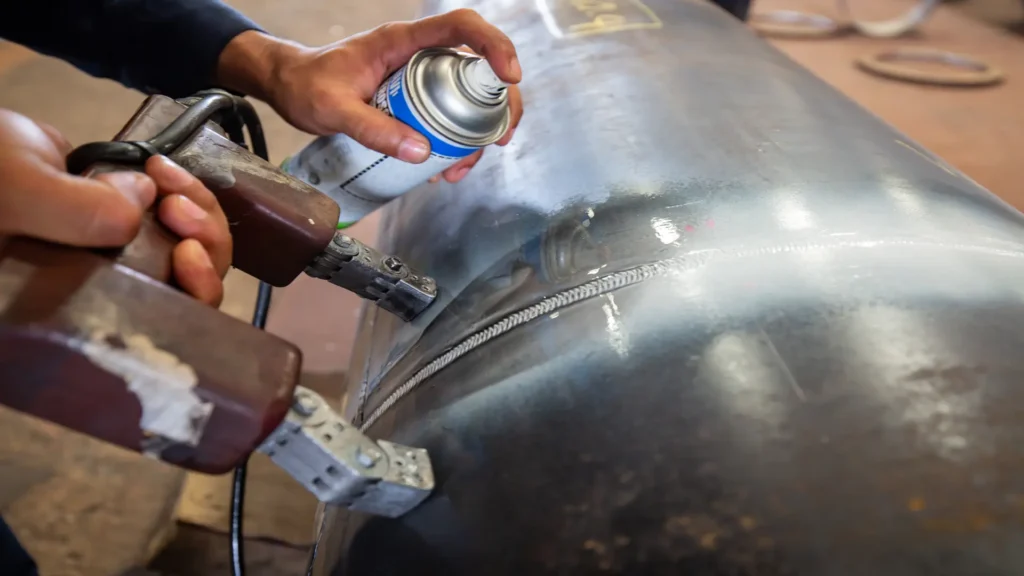Crucial Tips for Effective Welding Inspection Madison Providers
Recognizing the Basics of Welding Assessment to Make Sure Quality and Safety
In the world of modern engineering, welding examination stands as a foundation for making certain both the quality and security of architectural creations. What are the subtleties of these inspection techniques that make them important for preserving structural stability?

Importance of Welding Evaluation
In the realm of commercial manufacture, the value of welding inspection can not be overemphasized. Welding evaluation plays an essential function in making sure the stability, security, and long life of welded frameworks (Welding Inspection Madison).
The process of welding naturally includes complicated variables, consisting of temperature level, material residential properties, and ecological problems, every one of which can affect the high quality of the weld. An extensive evaluation recognizes defects such as cracks, porosity, and incomplete combination, which can endanger the stamina and integrity of the weld. By finding these problems early, rehabilitative activities can be taken, thus reducing the risk of failing and linked expenses.
Additionally, welding assessment adds to governing conformity, as lots of markets are regulated by rigorous safety and security standards and guidelines. Failure to stick to these policies can lead to economic charges and legal liabilities. Ultimately, welding examination not only safeguards physical frameworks but likewise upholds and safeguards human lives market credibilities.

Key Welding Assessment Methods
Although welding examination is vital to ensuring the top quality and safety of welded structures, it is the certain methods utilized that establish the performance of the examination procedure. Secret welding assessment techniques can be generally classified into non-destructive testing (NDT) and damaging screening.
Radiographic and ultrasonic screening are a lot more sophisticated strategies that permit inspectors to evaluate the inner integrity of the weld. Ultrasonic testing uses high-frequency sound waves to identify discontinuities, while radiographic testing uses X-rays or gamma rays to generate a photo of the weld's inside. Magnetic fragment testing and liquid penetrant screening are surface inspection approaches made use of to find surface area and near-surface defects. In comparison, harmful screening methods entail literally breaking or reducing the weld to analyze its mechanical buildings. These detailed examination methods make certain that welds fulfill industry standards and safety requirements, consequently ensuring structural stability and performance.
Function of Certified Inspectors
Certified inspectors play a critical function in the welding examination procedure, guaranteeing that all welds adhere to strict market criteria and security laws. Their expertise is vital in identifying issues or abnormalities that might compromise the structural honesty of a weld. By diligently taking a look at each weld, accredited inspectors assist stop prospective failures that could lead to pricey fixings or hazardous mishaps.
To become certified, inspectors should undergo extensive training and testing, which acquaints them with different welding techniques, products, and screening methods. This thorough knowledge enables them to examine weld high quality efficiently and make educated judgments about their security and integrity. Furthermore, qualified assessors excel in interpreting plans and requirements, guaranteeing that the welding job aligns with the project's design demands.
An important component of their role is to record their findings completely, offering an in-depth document of the assessment process. This documents is important for traceability and liability, functioning as a main record of conformity with market criteria. Qualified inspectors also play a key function in helping with communication between task stakeholders, providing referrals and insights to enhance welding techniques and outcomes. Their contribution is important in preserving high levels of top quality and security in welding procedures.

Devices Utilized in Welding Inspection
Welding assessors rely upon a variety of specialized tools to do their duties effectively, ensuring each weld satisfies the necessary requirements. Amongst these devices, aesthetic evaluation help like magnifying glasses and mirrors are basic, permitting inspectors to closely analyze welds for surface area issues such as cracks, porosity, and undercut. Calipers and fillet weld gauges are crucial for gauging weld dimensions to verify compliance with style requirements.
Advanced tools extend beyond aesthetic aids, consisting of non-destructive screening (NDT) tools. Ultrasonic screening gadgets are essential in spotting subsurface imperfections, utilizing audio waves to reveal internal interruptions without jeopardizing the weld's honesty. In a similar way, radiographic testing uses X-rays or gamma rays to catch photos of a weld's interior, highlighting prospective defects.
Magnetic bit screening is an additional critical device, specifically for finding surface and near-surface interruptions in ferromagnetic materials. By applying electromagnetic fields and ferrous bits, assessors can determine imperfections that could otherwise be undetectable.
Dye penetrant examination is typically made use of for non-ferrous products, giving a contrast-enhanced aesthetic look for surface-breaking problems. Welding Inspection Madison. Together, these tools allow welding inspectors to thoroughly assess weld quality, guaranteeing safety and security and dependability in different applications throughout sectors
Making Certain Architectural Integrity

Welding procedures have to abide by well-known criteria and codes, such as those specified by the American Welding Culture (AWS) or the International Company for Standardization (ISO) These guidelines ensure that the welds can hold up against ecological aspects and operational stress and anxieties. Certified and certified welders play an important function in this process, as their knowledge makes certain that techniques are used appropriately, minimizing problems such as cracks, porosity, and incomplete fusion.
Post-weld examination is one more essential component of verifying structural honesty. Non-destructive testing (NDT) methods, including ultrasonic testing and radiographic screening, are utilized to spot subsurface defects without jeopardizing the click for info bonded structure. These examinations validate that the welds meet the called for quality requirements, offering guarantee of their resilience and reliability. Eventually, guaranteeing architectural stability in welding not just safeguards human lives but additionally protects financial investments and enhances the durability of engineered structures.
Verdict
The principles of welding inspection are important for maintaining the quality and security of bonded structures. By applying key inspection methods, such as aesthetic evaluations and non-destructive screening, possible defects that could endanger architectural integrity are recognized. Licensed assessors are crucial in making certain compliance with market requirements and effective communication among stakeholders. The usage of specialized tools further enhances the examination process, inevitably protecting human lives and prolonging the lifespan of welded constructions.
Welding assessment plays an important role in guaranteeing the integrity, safety and security, and durability of bonded frameworks.Although welding assessment is important to guaranteeing the quality and security of welded frameworks, it is the details techniques used that establish the effectiveness of the examination process. Secret welding inspection techniques can be broadly categorized into non-destructive screening (NDT) and destructive testing.Qualified examiners play a crucial duty in the welding examination procedure, click here to read making certain that all welds conform with rigid sector requirements and security guidelines.The basics of welding examination are important for maintaining the quality and safety of bonded structures.